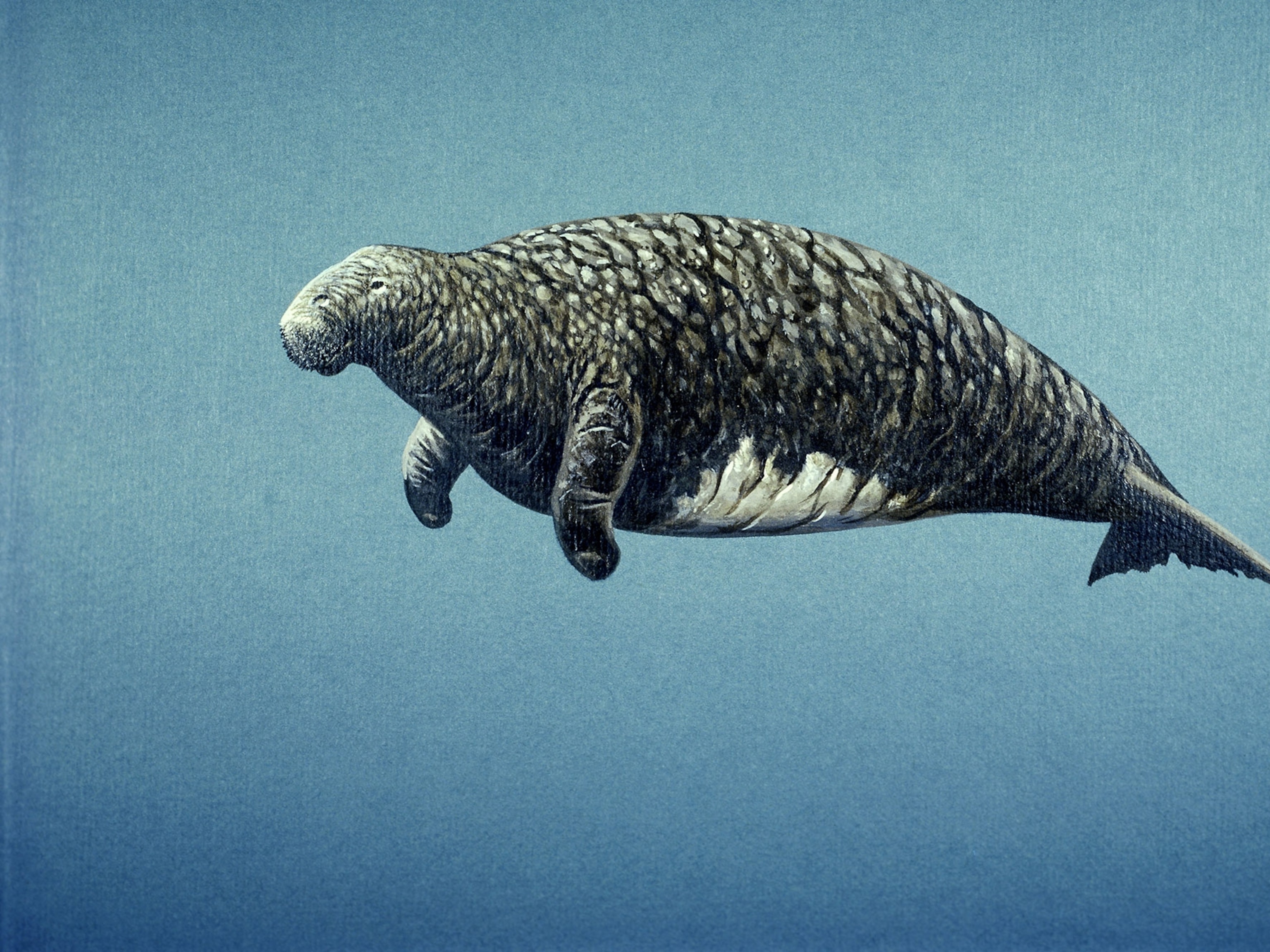
Face of Ancient Human Drawn From Hair's DNA
Genome paints picture of man from extinct Greenland culture
A 4,000-year-old hairball found frozen in Greenland has been used to create the first ancient-human genome, says a new study that paints a picture of a dark-eyed man with dry ear wax who was prone to balding.
Well preserved in Arctic permafrost, the hair belonged to "Inuk," a relatively young member of the now extinct Saqqaq culture, the earliest known inhabitants of Greenland.
The Saqqaq have long presented a puzzle to scientists, according to study co-author Eske Willerslev, an evolutionary biologist at the University of Copenhagen in Denmark.
"Various theories have suggested that they were direct ancestors to the Inuit, or that they were actually Native Americans who penetrated into the High Arctic," Willerslev said. But little has been known about the Saqqaq's genetic history, since archaeological sites have yielded only a few small bits of preserved bone and hair.
The new DNA evidence, presented online today by the journal Nature, shows that Inuk's closest relatives are not the ancestors of today's Native Americans and Inuits, but three Arctic peoples of the Siberian Far East: the Nganasans, Koryaks, and Chukchis.
"This evidence suggests a [unique] migration happening around 5,500 years ago," Willerslev said, adding that this estimate nicely matches the earliest archaeological evidence of New World Arctic habitation.
In addition, analysis of Inuk's genome—which is comparable in quality to a modern human genome—allowed the scientists to create a DNA-based profile of the Saqqaq male.
Inuk Prone to Balding, Built for Cold
The hair sample used in the study was recovered from northern Greenland in the 1980s and had been kept since then at the National Museum of Denmark. (Related: "Museum Secrets Unmasked by 'Museomics' Technologies.")
Unlike the DNA found in ancient skin or bone, genes housed in hair can be recovered relatively free of contamination from the genes of fungi or bacteria.
This advantage has helped, for example, in making breakthroughs sequencing ancient mammoth DNA.
And, as with Inuk, the ever improving techniques being used on ancient DNA are also helping scientists decipher not only where ancient peoples came from, but what they looked like. (See a photo of the first model of a Neanderthal based in part on ancient DNA evidence.)
"In many ways this is the really exciting bit of the paper," said David Lambert, an evolutionary biologist at Australia's Griffith University, who co-authored a commentary on the study for Nature.
"People have done [DNA] studies in the past able to pinpoint the geographic origin of samples to greater or lesser degrees. I think the more unusual thing they've done is this work with single nucleotide polymorphisms," or SNPs.
A person's genes are made up of bundles of molecules called nucleotides—the "letters" with which DNA is written. Some genome sequences can differ by a single nucleotide, and these variations are called SNPs.
Work on the modern human genome has produced a large database of known SNP variations, and many have been identified with specific physical characteristics, such as eye color, that their carriers are 99 percent likely to display.
Inuk's genome reveals he most likely had brown eyes, dark skin and hair, and even dry ear wax. Although the ancient Greenlander had genes susceptible to baldness, he seems to have retained plenty of hair, leading scientists to suspect he died young.
Inuk had the shovel-graded front teeth common in both Asian and Native American populations, and his A blood type is relatively frequent in northeastern Siberia. His metabolism also appears to have been genetically fine-tuned for life in unforgiving cold climates.
Inuk Proof of Third New World Migration?
In addition to establishing this genetic portrait, the newly sequenced Saqqaq genome offers the first hard proof for a theorized third human migration from Siberia to the New World, said geneticist and National Geographic explorer-in-residence Spencer Wells.
Wells, who heads the Genographic Project, was not involved in the research. (The National Geographic Society owns National Geographic News and funds the Genographic Project.)
The first such migration is generally thought to be the journey of America's original paleo-Indian settlers, who crossed the Bering Strait via the Beringia land bridge some 15,000 years ago. These people likely became the ancestors of most South Americans and many North Americans.
"Then there was a later migration—probably by boat along the coast—some 6,000 to 8,000 years ago by the ancestors of western North Americans speaking the Na-Dene languages," Wells said. Today Na-Dene languages, including Navajo and Apache, are spoken only in western North America.
Linguistic evidence had suggested to some scholars that there must have been a third migration, although that theory is far from universal.
Still, Inuk's DNA trail links the Saqqaq more closely to Siberian cultures than Native American, leading Willerslev and colleagues to suggest his people must have made a separate, later migration.
The Bering Strait land bridge had disappeared by 5,500 years ago, so Inuk's ancestors must have crossed by kayaks, like those used by more recent Arctic peoples, or by walking the winter pack ice.
Making the Impossible Possible
Overall, the new study highlights the advances being made in genetic sequencing, the study authors and other experts say.
"It's an amazing technical achievement to get a whole genome out of a hair sample," Wells said.
And as sequencing technologies continue to improve even as expenses drop, similar projects could give new insights into past peoples such as the mummies of South America, study co-author Willerslev said.
Griffith University's Lambert agrees, although he cautions that similar results may be difficult to duplicate, because it was extraordinary to find so much ancient hair in such fine condition.
DNA degradation is related to temperature, so samples from outside the permafrost regions may be especially difficult to find and sequence, he noted, although he holds out hope that scientific advances and a bit of luck might yield unexpected finds.
"What's impossible today," he said, "is possible tomorrow."







